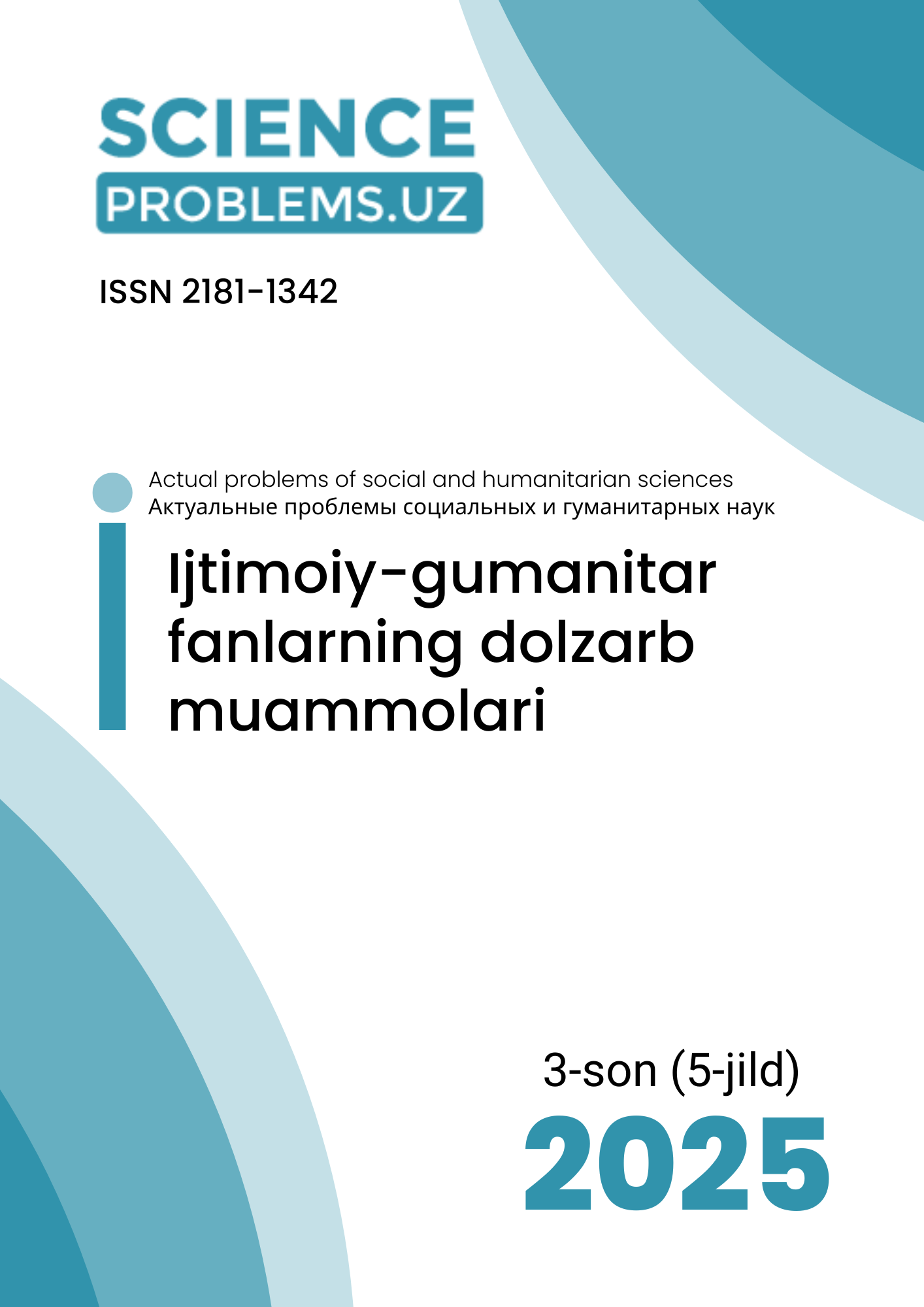BMT INSON HUQUQLARI BOʻYICHA SHARTNOMAVIY ORGANLARI TIZIMINI KUCHAYTIRISH
Kalit so'zlar
https://doi.org/10.47390/SPR1342V5I3Y2025N65Kalit so'zlar
BMT, inson huquqlari, Shartnomaviy organlar, rezolyutsiya, OHCHR, Bosh assambleya.Annotasiya
Ushbu maqola Birlashgan Millatlar Tashkilotining (BMT) inson huquqlari boʻyicha shartnomaviy organlari tizimining rivojlanishi, hozirgi holati va kelajakdagi istiqbollarini tahlil qiladi. Maqolada tizimning 1969-yildan beri oʻsishi, uning inson huquqlari himoyasidagi muhim roli, shuningdek, soʻnggi oʻn yillikdagi kengayishi natijasida yuzaga kelgan qiyinchiliklar koʻrib chiqiladi. Shu bilan birga, 68/268-sonli Bosh Assambleya rezolyutsiyasi asosida amalga oshirilgan islohotlar jarayoni va uning natijalari, davlatlarning hisobot berish majburiyatlaridagi muammolar hamda tizimni mustahkamlash boʻyicha takliflar muhokama qilinadi. Maqolada 2020-yilgi koʻrib chiqish jarayonining ahamiyati va akademik tadqiqotlarning tizimni isloh qilishdagi oʻrni alohida taʼkidlanadi. Xulosa sifatida, shartnoma organlari tizimining kelajagi uchun bosqichma-bosqich islohotlar va global baholashning muhimligi urgʻulanadi.
Manbalar
1. Foreword by the Secretary General of the UN to the report by the High Commissioner for Human rights, Strengthening the United Nations human rights treaty body system, June 2012, page 7 (A/66/860).
2. Vienna Declaration and Programme of Action, Adopted by the World Conference on Human Rights in Vienna on 25 June 1993, para 5, http://www.ohchr.org/EN/ProfessionalInterest/Pages/Vienna.aspx
3. A/RES/68/268, General Assembly resolution on strengthening and enhancing the effective functioning of the treaty body system.
4. Olivier De Frouville, Strengthening the Rule of Law: The Right to an Effective Remedy for Victims of Human Rights Violations in Julia Kozma, Manfred Nowak, Anna Müller-Funk (eds.), Vienna +20: Advancing the Protection of Human Rights Achievements, Challenges and Perspectives 20 Years After the World Conference, Ludwig Boltzmann Institute of Human Rights, Studies Series, vol. 31, Vienna, Austria: Neuer Wissenschaftlicher Verlag, January 2014, p.129.
5. Navi Pillay, The International Human Rights Treaty System: Impact at the Domestic and International Levels, Human Rights Brief, Vol. 21, Iss. 1 [2014], Art. 6, p.g. 2.
6. OHCHR, Annual Meeting of the Chairpersons of Human Rights Treaty Bodies, http://www.ohchr.org/EN/HRBodies/AnnualMeeting/Pages/MeetingChairpersons.aspx
7. UN General Assembly, Report of the co-facilitators on the intergovernmental process of the General Assembly on strengthening and enhancing the effective functioning of the human rights treaty body system, UN Doc A/68/832, April 2014, p. 26.
8. Eibe Riedel, Global human rights protection at the crossroads: Strengthening or reforming the system, 2013.
9. A Study of State Engagement with International Human Rights Mechanisms, OHCHR, 2016, accessible at http://www.ohchr.org/Documents/Publications/HR_PUB_16_1_NMRF_Study.pdf
10. Wilton Park, Report, Strengthening the UN human rights treaty monitoring system: what are the next steps?, Jan 2015, accessible at https://www.wiltonpark.org.uk/wp-content/uploads/WP1375-Report.pdf
11. The report of the first regional consultation in Dublin can be accessed at http://www.geneva- academy.ch/policy-studies/research-projects-and-policy-studies/un-treaty-body-review-2020
12. On the analysis of the dynamics of these negotiations, see Christen Broecker and Michael O’Flaherty, The outcome of the General Assembly’s Treaty Body Strengthening Process: An important Milestone on a Larger Journey, Universal Rights Group, Policy Brief, June 2014.
13. Ibrahim Salama. “Strengthening the UN human rights treaty body system: prospects of a work in progress”.








